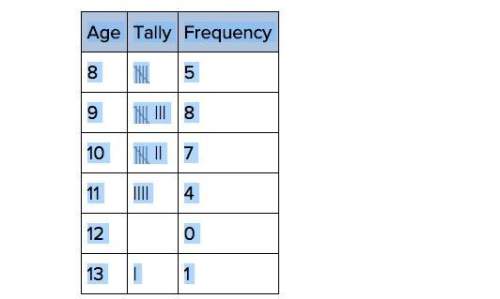I have the following dilemma:
Calculate Marginal effect by hand with logit function and...

Mathematics, 10.02.2020 17:01 lindsey0456
I have the following dilemma:
Calculate Marginal effect by hand with logit function and dummy binary variables
I understand-ish what marginal effects are, also the calculation of it, derivation of the sigmoid function and how to interpret it (as a the change in probability by increasing your variable of interest by "a little bit", this little bit being 1 for discrete vars or by a std(x)/1000 for continuous ). Now, the part I find tricky is to corroborate the results of the marginal effects by hand and recalculating the probabilities for x=0 and then x=1 (for example) with and then get a difference in probability equal to the marginal effect I got earlier, I am particularly stuck dummy variables since If I increase one, I have to decrease the other one, so I am not so sure how to work around it and interpret it. (this question also applies for highly correlated variables)
To make it more clear, let's say I have the following dataset:
x0, x1, x2, x3, x4, x5, x6
[1 , 0. , 0. , 4.6, 3.1, 1.5, 0.2],
[1 , 0. , 1. , 5. , 3.6, 1.4, 0.2],
[1 , 1. , 0. , 5.4, 3.9, 1.7, 0.4],
[1 , 0. , 1. , 4.6, 3.4, 1.4, 0.3],
[1 , 1. , 0. , 5. , 3.4, 1.5, 0.2],
[1 , 0. , 0. , 4.4, 2.9, 1.4, 0.2],
[1 , 0. , 1. , 4.9, 3.1, 1.5, 0.1],
[1 , 1. , 0. , 5.4, 3.7, 1.5, 0.2],
...
x0 = What will eventually the intercept.
x1, x2 = Dummy variables, I left 2/3, one dropped to avoid co linearity.
x3,4,5,6 = regular continuous variables
Coefficients:
[ 7.56986405, 0.75703164, 0.27158741, -0.37447474, -2.79926022, 1.43890492, -2.95286947]
logit
[-3.34739217,
-2.27001103,
-1.49517926,
-0.77178644,
-0.808111,
-2.48474722,
-1.76183804,
-0.90621541
...]
Probabilities
[0.03398066,
0.09363728,
0.18314562,
0.31609279,
0.30829318,
0.0769344 ,
0.14656029,
0.28777491,
...]
Marginal effect = p*(1-p) * B_j
Now let's say that I am interested in the marginal effect of x1 (one of the dummies), I will simply do: p*(1-p) * 0.7570 (its respective coefficient), which will result in an array of length n (# of obs) with different marginal effects (which is fine because I understand that the effects are non constant and non-linear). Let's say that this array goes from [0.0008 to 0.0495]
Now the problem is, how can you verify this results? How can I measure the marginal effect when the dummy goes from values 0 to 1?
You could argue that I could do two things MEM and AME methods:
MEM: Leave all the values at its mean and then calculate all over again for x1 = 0 and then for x1 = 1 (MEM method)
(you can't really do this because that you will be assuming that you can have some observations where x1 and x2 will be equal to 1 at the same time, which incorrect since the mean for a dummy is like a proportion of how many "1s" there are for that column)
AME: Leave as observed, but changing all the values of x1 to 0 (making all the values of x2 = 1) and then do the opposite (x1 = 1, x2 =0, you have to do this since it can't belong to two categories at the same time), and then take the average of the results (AME method) (Side comment: One thing I am not sure if it is the average between the difference in marginal effects when x1 = 0 and then 1, or if it is an average between the probabilities when x1 =0 and then 1, I used both, but probability I think it makes more sense to me)
Now, if I try the 2nd approach I get very different results to what I originally got ( which were values between [0.0008 to 0.0495]), it gives me values between [0.0022 to 0.1207], which is a massive difference.
To summarise:
How can do a mathematical corroboration to get the same values I got initially ([0.0008 to 0.0495])?
How can I interpret these original values in the first place? Because if I take 0.0495, I am basically saying "if I increase x1 by 1-unit (from 0 to 1), I will have a 4.95% increase in probability of my event happening", the problems is that it doesn't consider that to make the 1-unit increase I need to, by default, decrease the other dummy variable (x2), so I will be doing something of a double-change in the variables or like a double marginal effect at the same time.

Answers: 3
Another question on Mathematics

Mathematics, 21.06.2019 16:40
Simplify the expression and find the missing terms. the simplest form of has in the numerator and in the denominator.
Answers: 3

Mathematics, 21.06.2019 18:30
You love to play soccer! you make a shot at the net 8 times during a game! of those 8 attempts, you score twice. what percent of the time did you score?
Answers: 2

Mathematics, 21.06.2019 18:30
Do some research and find a city that has experienced population growth. determine its population on january 1st of a certain year. write an exponential function to represent the city’s population, y, based on the number of years that pass, x after a period of exponential growth. describe the variables and numbers that you used in your equation.
Answers: 3

Mathematics, 21.06.2019 20:00
Need ! the total ticket sales for a high school basketball game were $2,260. the ticket price for students were $2.25 less than the adult ticket price. the number of adult tickets sold was 230, and the number of student tickets sold was 180. what was the price of an adult ticket?
Answers: 1
You know the right answer?
Questions

Mathematics, 12.11.2020 22:10


Chemistry, 12.11.2020 22:10

Mathematics, 12.11.2020 22:10




Mathematics, 12.11.2020 22:10


Mathematics, 12.11.2020 22:10


Mathematics, 12.11.2020 22:10


Mathematics, 12.11.2020 22:10


Mathematics, 12.11.2020 22:10







